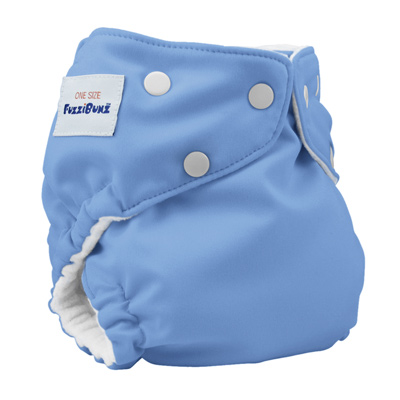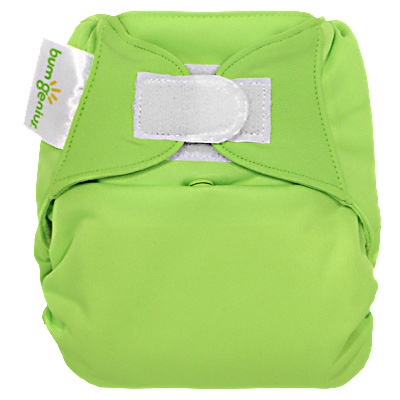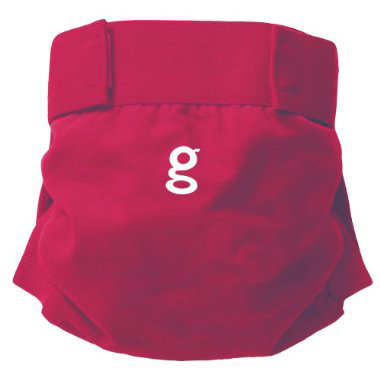As we prepare to dive into a life of of diapers, drool, and sleep deprivation, one of the major debates that have been on our mind is what diapering system we should choose for our baby. There are so many considerations that come into play in making this decision — the health of the baby, environmental impact, convenience, and financial cost.
On the health front, cloth diapers are hands-down the better choice. Disposable diapers are known to contain trace amounts of dioxin, which is a carcinogen known to cause damage to the central nervous system as well as to the kidneys and liver. Beyond that, the various chemicals, paper, and plastic that are found in disposable diapers have caused allergic reactions among infants and have been linked to a rise in asthma and infertility (among baby boys) later in life.
The differences in the environmental impact, however, are not as stark as you would expect them to be, which is ironic because it seems like it is the factor that people seem most concerned about when it comes to the debate between cloth vs disposable diapering.
The negative effects of disposable diapers on our environment are pretty obvious — every year, 2 billion tons of human waste and diapers are thrown into the landfills, and those diapers will take about 500 years to completely decompose. It takes roughly 80,000 lbs. of plastic and over 200,000 trees to manufacture diapers annually in this country, and that all goes to clog our landfills. Did you know that you’re actually supposed to dispose of the human waste in the toilet before throwing your baby’s diaper away? But how many parents actually do that, instead of just quickly rolling it all up in the diaper and tossing it in the garbage? (That’s what I’ve always done when needing to change a baby’s diaper — I didn’t know you weren’t supposed to!) This means that 5 million tons of untreated human waste is going into landfills and contaminating our groundwater.
On the other hand, a lot of people will argue that cloth diapers are harmful in their own ways to our ecosystem. While they may produce less solid waste and don’t affect our landfills, it still takes significantly more of our resources — energy and water — to properly launder cloth diapers than disposable diapers. Depending on the cloth diapers, there may be strong chemicals that are used in washing them, which can also hurt the environment. Still, when you compare the long-term effects of cloth diapers and disposable diapers, it’s pretty clear that disposable diapers ultimately do more damage to the earth.
In terms of convenience, disposable diapers would probably win against cloth diapers. There’s no arguing that disposable diapers are the easiest to handle — as long as you are always stocked up, you can change them out as you please and just toss them when they get dirty, without having to deal with them ever again. The convenience of disposable is undeniable, but it comes at the expense of (as mentioned above) your baby’s health and the environment, as well as cost.
…which leads us to the next point. Just as there’s no questioning the convenience of disposable diapers, there is also no denying that disposable diapers are the most expensive diapering option. It costs an average of $3000 per child from birth to the time they are potty-trained. Buying enough cloth diapers to outfit your baby will be expensive at first ($500-800), but it is an investment that will last for years, especially if you use them for multiple children. Even if you only have one child, cloth diapers are said to pay for themselves within half a year or so, beyond which those using disposable diapers have to continue to diapers while those using cloth are diapering practically for free. Paying under $1000 for all of your children’s diaper needs versus spending upwards of $3000 per child is quite a significant difference.
It’s also a known fact that on average, kids in cloth diapers get potty trained earlier than those in disposable diapers. It has something to do with the fact that they tend to feel more of the discomfort from wetting or soiling their diapers than they do with disposable diapers, which are often more absorbent and keep babies from feeling the same degree of discomfort. Earlier potty-training means less time having to deal with diapers at all, which is more appealing to me than anything!
So, taking into account all these factors, cloth diapers seem to be the smarter option, right? Now before you go shaking your head in disbelief and disgust over the thought of cloth diapers and how messy you imagine them to be, let me tell you that I initially felt the same way:
To be completely honest, before I got pregnant, I would not have even considered cloth diapering. Changing my younger siblings’ dirty diapers grossed me out while I was growing up, and the thought of having to launder dirty cloth diapers — instead of simply tossing them in the diaper pail — made me sick to my stomach. But this was because I was imagining the old-school cloth diapers that are pinned closed with a giant safety pin. Little did I know that with the advent of modern diapers, you could choose from diapers that have liners or inserts (that keeps the waste and mess you have to deal with to a minimum), with snaps, buttons, or velcro closure. There are so many options out there — and may I add that many of them are adorable! π
Here are some of the great options I’ve found in my research of cloth diapers….
FuzziBunz: The greatest part about these is that they come in a One Size option, with several snap settings that allows you to use these diapers from when your baby’s a newborn until they’re potty-trained, without having to upgrade to larger sizes as they grow. The fact that they’re adjustable to fit snugly on your baby’s bum is a great feature makes them some of the most popular cloth diapers on the market!

Bumgenius: This is an all-in-one cloth diaper with an absorbent layer integrated with a waterproof outer layer. They’re supposedly very easy to work with, featuring stretchy tabs and hook & loop closures. The super absorbent nature of the diapers and the fact that you don’t have to deal with any sort of stuffing or inserts makes it a convenient choice for a lot of parents.

gDiapers: This is actually the option I personally am leaning most heavily towards. It is actually not a true cloth diaper — it’s more accurately described as an earth-friendly hybrid of cloth and disposable! You buy the washable gPants diaper covers, and you can choose from either biodegradable diaper inserts or reusable cloth diaper inserts. The biodegradable inserts are 100% biodegradable, and can be home composted, flushed, or tossed in the garbage. The cloth inserts are made of microfleece and hemp cotton, which are super absorbent and make for a breathable diaper for your baby’s skin. Either way you choose to go, it’s eco-friendly and good for both the earth and baby. The gPants diaper covers come in three sizes, adorable bright colors, and have an easy velcro closure to work with.

Here’s a video that actually shows how fast the biodegradable gDiaper inserts break down, compared to regular disposable diapers.
You can see how the gDiaper system works with the following video:
Dan and I are still not sure what to do for diapering the baby, and I guess we probably won’t know until she’s here and we try some different options to see what works best for us. Being a new parent is such a challenge in itself that I’m predicting that for the first month or so, we’ll probably just use disposables until we get adjusted to diapering in general. I think I would without question go the cloth diapering route if I were to be a stay-at-home mom and had the time to be doing laundry several times a week. But I plan to return to work in some capacity after my maternity leave, and it’s difficult to find a caretaker or a daycare that will be flexible enough to work with your diapering system, especially if it’s not one they are used to. That said, I think it’s really important to consider and weigh all the various options that are available to us these days — being knowledgeable and aware of them will help you make an informed decision about what will be the best fit for your family and for your lifestyle.